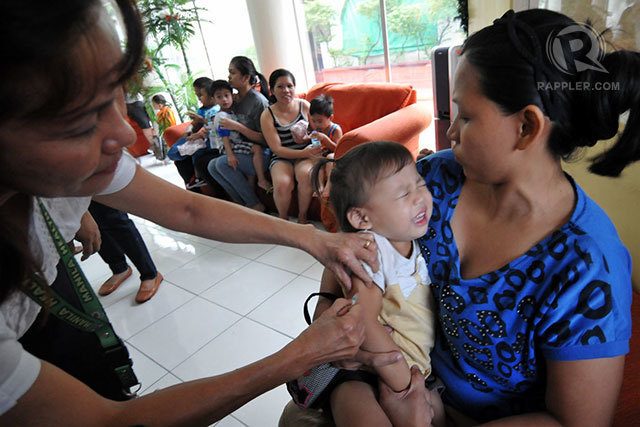SUMMARY
This is AI generated summarization, which may have errors. For context, always refer to the full article.

MANILA, Philippines – Children in the Cordillera Administrative Region, Ilocos Region, Cagayan Valley, and Central Luzon will be given the Japanese encephalitis vaccine starting this month, the Department of Health (DOH) announced on Tuesday, March 19.
The DOH said children 9 months to less than 5 years old may receive the vaccine, which will be administered through an immunization campaign. Health officials will be introducing the vaccine in the 4 regions, as these areas were the most affected by the disease.
Health Secretary Francisco Duque III assured the public that the vaccines are safe, saying the World Health Organization (WHO) has reviewed its safety and effectiveness and that the Food and Drug Administration has approved it.
“It is safe and effective. It has been used for over 30 years in 12 countries and given to more than 400 million children with an excellent safety record,” Duque said.
Health officials were scheduled to give children the vaccine in March, following the WHO’s recommendation to set immunization outside periods where the occurrence of Japanese encephalitis was high. For the Philippines, the DOH said that means giving the vaccine before the rainy season – when the disease peaks.
What is Japanese encephalitis? Endemic in the Philippines, Japanese encephalitis is a mosquito-borne viral disease and is the leading cause of viral encephalitis (inflammation of the brain) in Asia.
Children are considered most at risk for the disease. Symptoms include high fever, chills, headache, and fatigue.
Japanese encephalitis can rapidly lead to infection of the brain. According to the DOH, 3 out of 10 individuals who experience severe illness from the disease will die. Among those who survive, over half may suffer from paralysis, recurrent seizures, or inability to speak, among others.
Data from the DOH’s Epidemiology Bureau showed there were cases of Japanese encephalitis in every region of the country. There has also been a steady increase in cases recorded, with 122 laboratory confirmed cases of the disease seen in 2016, 275 in 2017, and 340 in 2018.
Why this matters: The introduction of the vaccine comes as the DOH is struggling to contain a measles outbreak that has swept across the country.
Introducing the Japanese encephalitis vaccine once again puts to the test the health department’s efforts to increase vaccination coverage. Immunization rates plummeted in the wake of the Dengvaxia scare in November 2017.
In a previous interview with Rappler, National Immunization Program Manager Wilda Silva said the introduction of the Japanese encephalitis vaccine was long overdue. It was supposed to be introduced in late 2017. (READ: Post Dengvaxia controversy: Paving the way forward for vaccines, health care)
Health officials likewise said vaccination is the “only effective measure” to stop transmission of the disease and bring down the number of cases. – Rappler.com
Add a comment
How does this make you feel?
There are no comments yet. Add your comment to start the conversation.